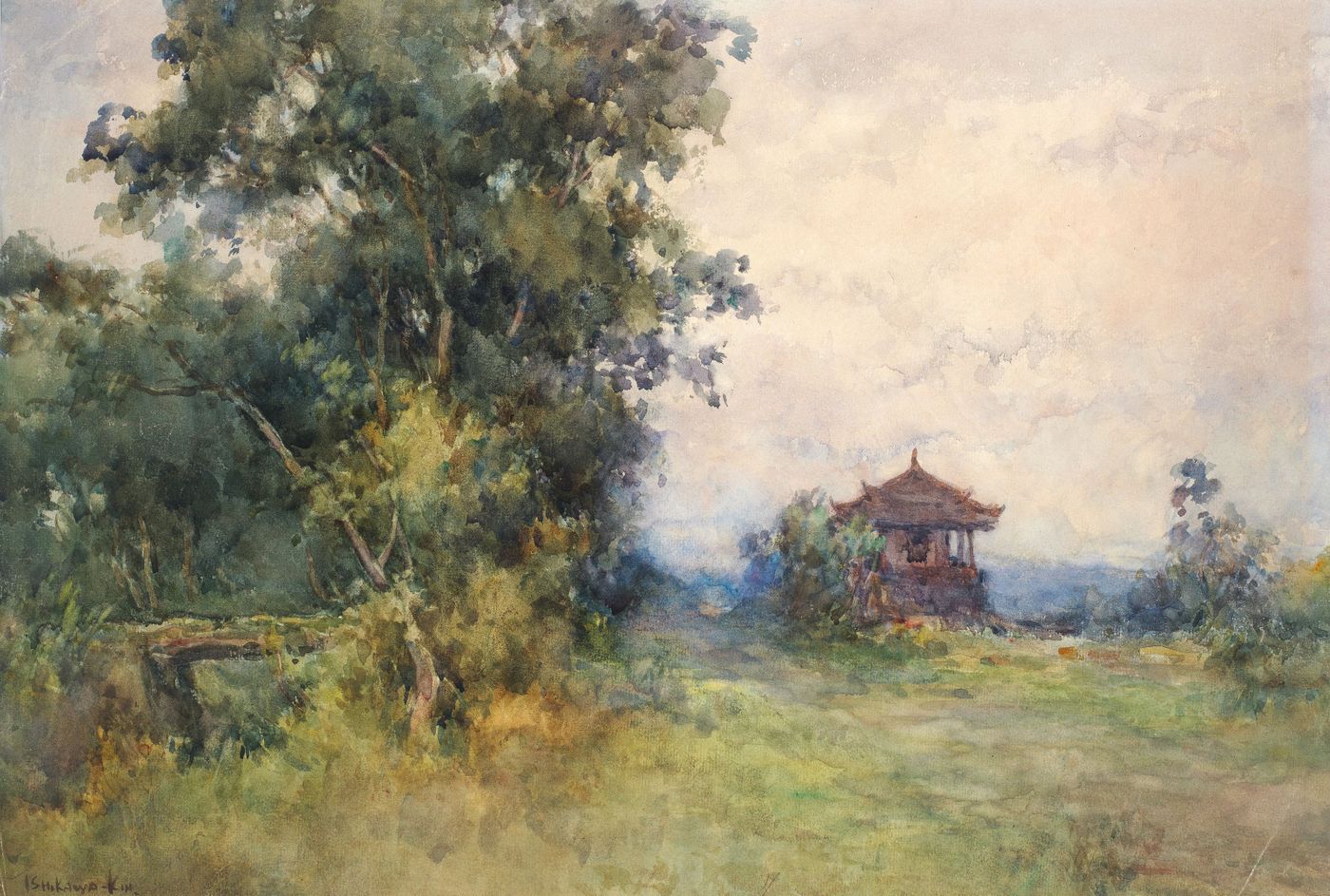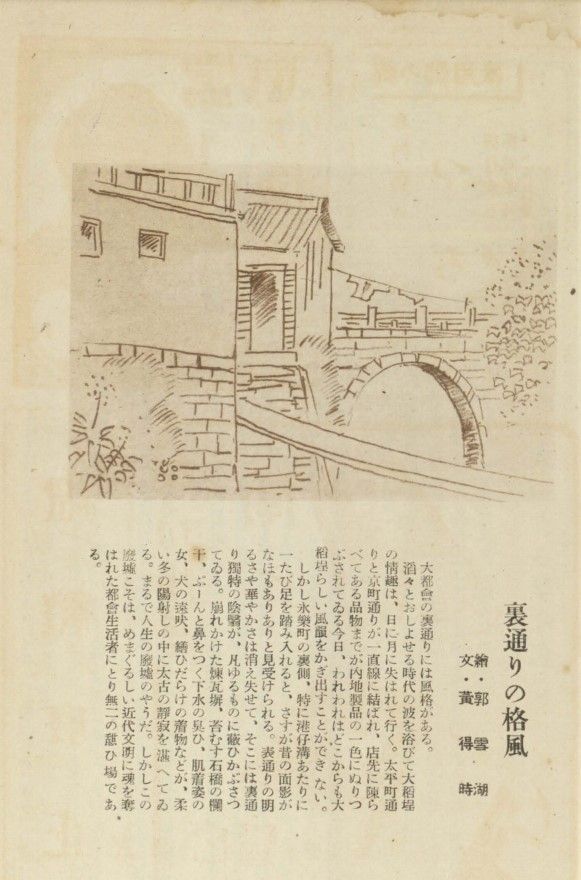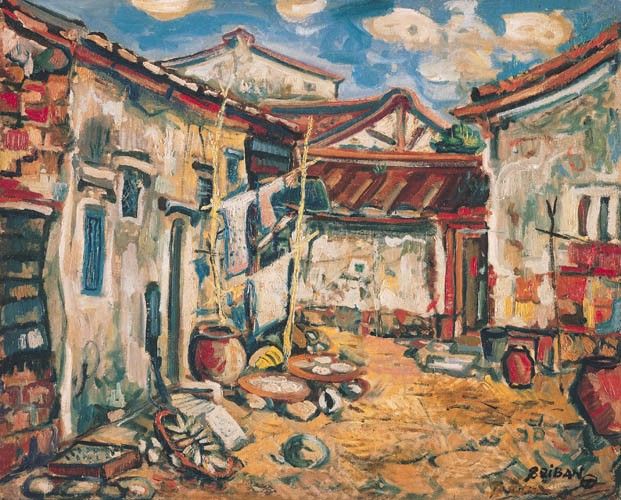
Facebook:https://www.facebook.com/ecthelion1993/ 美術史是研究美術品與時代文化交涉互動下的歷史研究,而當代讀者的閱讀及傳播也參與了美術史的形塑。五丁目期待透過不同形式的短篇筆記,提供關心文化、喜好藝術的各位一個富知識性的生活提案。
The Conflict of the South Railway East Transfer Case and Rethinking from the Perspective of Art History
Recently, due to the undergroundization of the Tainan Railway (the Southern Railway was moved eastward), the Bureau of Railways forcibly demolished the last households along the line who refused to relocate. This caused fierce clashes between the police, residents who had been protesting for a long time, and supporters. Even if the government has a legal basis in the process of land acquisition, it has always been difficult to achieve mutual satisfaction. When a house becomes a property that can be measured by money on paper and in law, a certain degree of legal violence is formed. After all, the so-called "home" cannot be legally reduced or measured.

It is difficult to distinguish the pros and cons of this issue by political color, because the ideology of these people who stand against the forced demolition may vary from blue to green. On the other hand, we can observe another interesting phenomenon from the composition of the supporters: they may oppose the illegal extension of the sublime mines, believing that this deprives the aboriginal people of their land use rights; but they also oppose the Southern Railway Legal expropriation of underground works. However, no matter whether it is illegal or legal, anti-demolitionists are fighting from the standpoint of so-called land justice. From the perspective of liberalism, private property is oppressed, and it is not impossible to resist the system.
The so-called pursuit of land justice and land rights awareness has been around for a long time. As early as the Japanese occupation period, the tidy street house facades and zoning streets after urban corrections were actually operated by the colonial political power through donations, expropriation, The result of forced demolition and other forms. Aren't many young men who oppose the forced demolition of the Railway Bureau and criticize the government's actions this time, also fascinated by the neat and beautiful aesthetics of the Japanese occupation period, and ridiculed the messy and ugly aesthetics of the Republic of China after the war? The aesthetic discourse they use to attack dissidents comes from the oppression of the government they resist, and is inseparable from what they call Colonial Modernity.
From the 1920s to the 1930s, Taiwanese people's awareness of land rights and cultural assets began to sprout. The sugar production club, which needed to build a dedicated railway to transport cane sugar, often ran into obstacles at the stage of land acquisition, and negotiated with the Governor's Office to try to incorporate this railway into the land acquisition law. At that time, it also sparked public protests and demanded that the law be amended. [1]
On the other hand, with the urban planning of the Governor's Office, the city walls and buildings remaining in the Qing Dynasty were often demolished in the process of correction. For intellectuals and writers who often think about cultural development and preservation, they cannot help but feel that pity. For example, studying painting in France, Chen Qingfen, who once strolled in front of the Arc de Triomphe in Paris, sighed:[2]
Every time I pass by the North Gate, I can't help thinking that if Taipei City is well preserved, the antique flavor of Taipei can be perfectly presented!
A city without historic sites will never be tasteful. Once a beautiful Taiwan, once it loses its traditions, it will become a Taiwan that is not worth seeing.
For them, although the cafes and galleries on the modern streets are their social spaces, their eyes and feet often look at the messy back alleys (sato towns), abandoned city gates and historic sites.


The Japanese painter Ishikawa Kinichiro, who came to Taiwan twice in 1907 and 1924, witnessed the changes and modernization of Taiwan's cities. The old city gates were originally deserted and grassy, turned into neat and wide three-lane roads; twisting streets and trails. Straightened into neat rows of street houses. But most of the time, he wanders the old paths beside Dadaocheng and Mengka back alleys and ditches, trying to retrieve the Taiwan in his memory from these "urban fringes", and depicts those who pursue modern cities The low alleys of old houses despised by the experiencers.
Among them, he is particularly fond of Tainan:[3]
I traveled most frequently from the end of Meiji to the beginning of Taisho. Looking back now, it has not yet modernized, and it is full of pure Taiwanese style. Especially at that time, Tainan looked like an ancient face like Nara or Rome. At that time, I could see all the beautiful old scenery at a glance, but now when I walk in Taiwan, I can't see any features everywhere. It's a pity. This is also the trend of the times. , but also cultivated my aesthetic.

Born in the early Meiji years of rapid Westernization and innovation, Ishikawa Kinichiro saw old shrines and temples destroyed under the banner of modernization. He has traveled to Europe, China and other places, and has seen many historical sites. Through his own influence, he used Taiwan's newspapers and media to speak out about the importance of the preservation of historical sites:[4]
Buildings will be damaged after a long time, and the result will become a troublesome thing. Although the ancient monuments in Rome are broken, they still rely on the method of maintaining the original state as much as possible. This is absolutely necessary for ancient cities, even Taiwan. have to face this problem.
However, as a Japanese, Ishikawa may have a somewhat hazy vision of Exoticism in his eyes. However, in the late 1930s and even in the 1940s, due to the growth of urban population, local literary and artistic people faced the intensification of urbanization in person, and began to pay more attention to the in-depth investigation and pay attention to the neglected and neglected by urban residents. The back alley "frontier" of ugly scenery. For example, this piece of prose published by Huang Deshi in 1942:[5]
As soon as you step into the inner side of Yongle Town (Dihua Street), especially at the edge of Gangzaigou, you can still clearly see the traces of the past. The brightness and splendor of the street has disappeared, and the unique shadow of the inner street has obscured the ordinary. Collapsing brick walls, moss-covered stone railings, the smell of sewers, women in tight shirts, the distant barking of dogs, etc., are filled with ancient silence in the soft winter sun, like the ruins of life. But this ruin of life is really a unique resting place for urban life people who have been dazzled by the dazzling eyes of modern civilization and robbed of their souls.

It is worth mentioning that Guo Xuehu, who helped Huang Deshi draw the pictures, grew up in the alleys of Dihua Street in Dadaocheng. These youths of literature and art choose to coexist with the "urban frontier" and actively think about how to coexist and live with the city in a sustainable manner. On the other hand, as early as 1918, the Finnish urban planner Eriel R. Eliel Saarinen once put forward the so-called "Theory of Organic Decentralization", which compares cities to growing and multiplying creatures.
Ishikawa Kinichiro, Chen Qingfen, Huang Deshi, and even Saarinen all lived in an era of urban population expansion and construction expansion. What the Southern Railway Eastward Movement faced today, they also experienced it a hundred years ago. We all benefit from the convenience brought by urbanization, but the frontiers are often hurt in the process of urban expansion and growth, which leads to conflicts. Precisely because the city is the space where we coexist, whether it is a place to live, or the convenient transportation construction brought about by modernization, both are indispensable. Therefore, how to reach consensus and compromise between the two, and respect the interests and needs of either party. , is what we must seriously consider living in the city.

※This article was also published on Medium and shared on the Facebook fan page.
Notes:
[1]: Zhang Naiwen, "Land Expropriation in Taiwan in the Japanese Era" (Master's Thesis, Institute of Taiwan History, National Taiwan Normal University, 2014).
[2]: Chen Qingfen, "Barry Guanjian (5) Artist's Nest モンバルナス—", "Taiwan Daily News", 1931–12–29 (Edition 6). For translation, refer to Yan Juanying's translation, Landscape Mood: A Guide to Modern Art Literature in Taiwan (Part 1) (Taipei: Lion, 2001), p. 152.
[3]: Ishikawa Kinichiro, "Reminiscence of Taiwan's Scenery", "Taiwan Times", 1935–6, p. 54. For translation, refer to Yan Juanying's translation, Landscape Mood: A Guide to Modern Art Literature in Taiwan (Part 1), p. 55.
[4]: Ishikawa Kinichiro, "Reminiscence of Taiwan's Scenery", pp. 54–55. For translation, refer to Yan Juanying's translation, Landscape Mood: A Guide to Modern Art Literature in Taiwan (Part 1), p. 55.
[5]: Huang Deshiwen and Guo Xuehu, "Litong りの Style", "Taiwan Gong Lun", Vol. 7 (Taipei, 1942–12), no pagination. For translation, please refer to Qiu Hanni, "Sketchers on the Streets: Images and Urban Spaces of Taipei During the Japanese Occupation", Master's Thesis, Institute of Art History, National Taiwan University, 2000, p. 119.
Like my work?
Don't forget to support or like, so I know you are with me..
Comment…